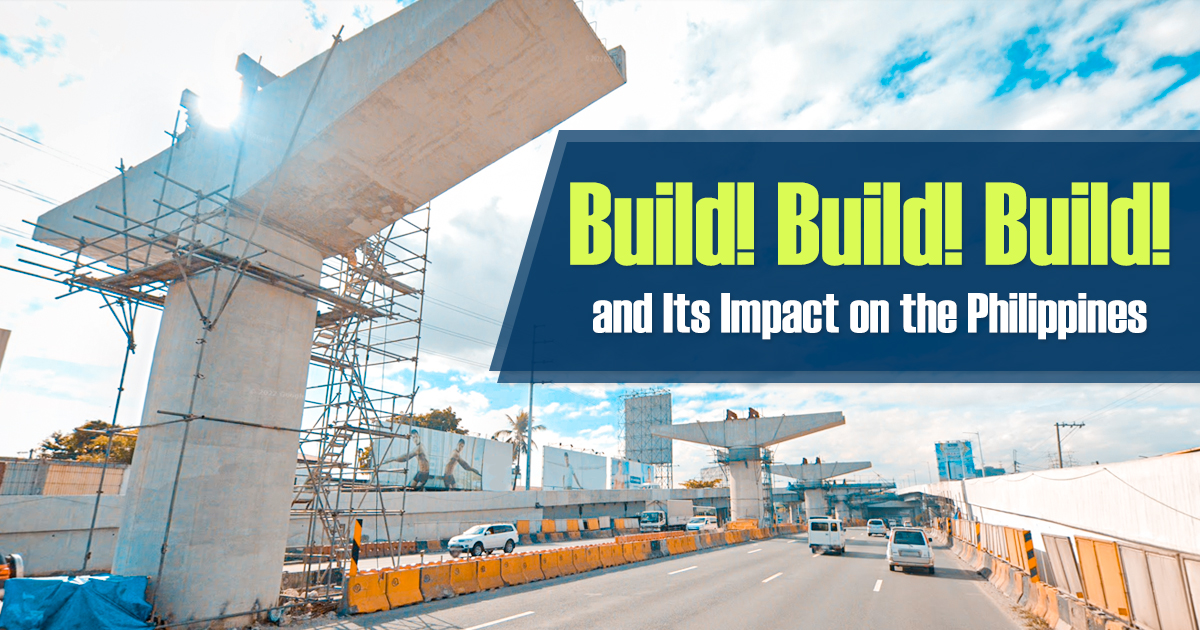
When President Rodrigo Duterte sat in the office in 2016, one of his top priorities was to push for the Build! Build! Build! (BBB) Program. This ambitious project entailed the construction of new airports, seaports, and highways all over the country. The Build Build Build program has been a major help to the country’s logistics and transportation industries. The massive investment aided in the creation of new jobs and opportunities for businesses in other industries. In this article, we will take a closer look at the program and how it has helped to grow the logistics and transportation industry of the country.
What Is Build! Build! Build! (BBB) Program?
The Build! Build! Build! (BBB) Program is the Duterte administration’s flagship program. It aims to usher the nation into the “Golden Age of Infrastructure”. The inadequacy of infrastructure is regarded to be the “Achilles heel” of the Philippine economy.
Build! Build! Build! (BBB) Program is also credited with creating jobs and improving livelihoods. Since 2016, the program has created more than 6 million jobs. The program has been instrumental in the growth of the logistics and transportify industry in the Philippines. This is expected to grow further in the coming years as more infrastructure projects are completed.
Some Notable Projects Under BBB Program
1. Clark International Airport
One of the most notable projects under this initiative is the construction of a new international airport in Clark, Pampanga. With the new airport came a new passenger terminal complex for the CIA with a capacity of 8 million passengers per year. One of the CIA’s purposes is to serve as an alternative to Manila’s congested Ninoy Aquino International Airport.
2. Bataan-Cavite Interlink Bridge
The Bataan-Cavite Interlink Bridge is one of the program’s major endeavors. It will span 32.15 kilometers and connect Central Luzon, CALABARZON, and Metro Manila.
The bridge will begin at Barangay Alas-asin in Mariveles, Bataan, cross Manila Bay and end at Barangay Timalan, Naic, Cavite. Once done, the project decreases travel time from Bataan to Cavite from five hours to 20 to 30 minutes.
3. Subic Freeport Expressway
Despite the disruption caused by COVID-19, the Subic Freeport Expressway (SFEX) expansion project that began construction in May 2019 is now passable. Maintained by the NLEX Corporation, the expressway has a 108-meter tunnel and two bridges. The Argonaut Bridge and the Jadjad Bridge.
4. Plaridel Bypass Road
This project is a new arterial road connecting the towns of Balagtas, Guiguinto, Plaridel, Bustos, and San Rafael in Bulacan.
The recently completed expressway shortened travel time to and from the North Luzon Expressway. Via this new interchange at Barangay Burol 2nd, Balagtas to the Philippines-Japan Friendship Highway in Barangay Maasim, San Rafael, Bulacan.
Better Infrastructure Results in a Better Experience and Less Travel Time
The Philippines is an archipelago, made up of more than 7,000 islands. This is one of the main challenges for businesses in moving goods from one island to another. That is why our economy needs a better infrastructure that can help to improve this situation. The Philippines has a RORO system to handle this issue. The Philippines has a RORO system in place to address this issue. It would be far more effective in the future if sophisticated infrastructure such as bridges and highways supported it.
Building new bridges and roads, for example, can help to increase trade between islands. This can help trucks and other vehicles move products from one location to another. Furthermore, the construction of new seaports can help to increase shipping efficiency in the Philippines. Improved infrastructure can also help cut transit time for passengers and freight. The developed and yet-to-be-built infrastructures are likely to boost commerce and commercial activity in the Philippines. These will allow the logistics and transportation industry to move things and people faster.
SEE ALSO:
